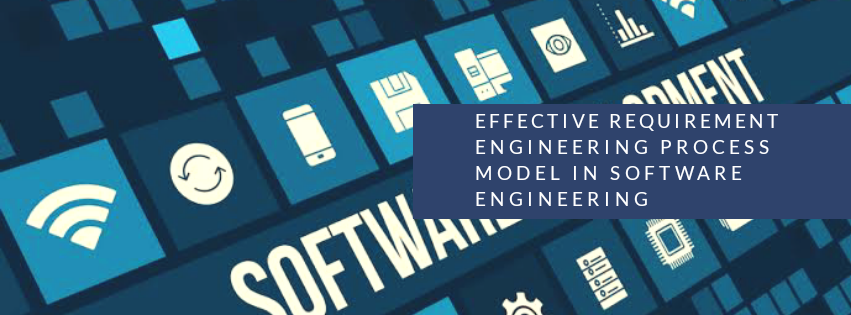No products in the cart.

DO NOT DELETE

Effective Requirement Engineering Process Model in Software Engineering
Author: Isonkobong Udousoro
Pages: 0
Genre(s):
Publisher:
Subject:
Country:
Publication Year: 0
Edition
Finished? Yes, on
Signed? Yes
Description
Notes
References
[1]
Kotonya, G., & Sommerville, I. (1998). Requirements engineering: processes and techniques. Wiley Publishing.
[2]
Macaulay, L. A. (2012). Requirements engineering. Springer Science & Business Media.
[3]
Glinz, M. (2007, October). On non-functional requirements. In 15th IEEE International Requirements Engineering Conference (RE 2007) (pp. 21-26). IEEE.
[4]
De Lucia, A., & Qusef, A. (2010). Requirements engineering in agile software development. Journal of emerging technologies in web intelligence, 2 (3), 212-220.
[5]
de Gea, J. M. C., Nicolás, J., Alemán, J. L. F., Toval, A., Ebert, C., & Vizcaíno, A. (2011). Requirements engineering tools. IEEE software, 28 (4), 86-91.
[6]
De Gea, J. M. C., Nicolás, J., Alemán, J. L. F., Toval, A., Ebert, C., & Vizcaíno, A. (2012). Requirements engineering tools: Capabilities, survey and assessment. Information and Software Technology, 54 (10), 1142-1157.
[7]
Giorgini, P., Massacci, F., Mylopoulos, J., & Zannone, N. (2006). Requirements engineering for trust management: model, methodology, and reasoning. International Journal of Information Security, 5 (4), 257-274.
[8]
Schön, E. M., Thomaschewski, J., & Escalona, M. J. (2017). Agile Requirements Engineering: A systematic literature review. Computer Standards & Interfaces, 49, 79-91.
[9]
Garrido, J. L., Gea, M., & Rodríguez, M. L. (2005). Requirements engineering in cooperative systems. In Requirements Engineering for Sociotechnical Systems (pp. 226-244). IGI Global.
[10]
Massacci, F., Prest, M., & Zannone, N. (2005). Using a security requirements engineering methodology in practice: The compliance with the Italian data protection legislation. Computer Standards & Interfaces, 27 (5), 445-455.
[11]
De Lemos, R., Giese, H., Müller, H. A., Shaw, M., Andersson, J., Litoiu, M.,... & Weyns, D. (2013). Software engineering for self-adaptive systems: A second research roadmap. In Software Engineering for Self-Adaptive Systems II (pp. 1-32). Springer, Berlin, Heidelberg.
[12]
Van Vliet, H., Van Vliet, H., & Van Vliet, J. C. (2008). Software engineering: principles and practice (Vol. 13). Hoboken, NJ: John Wiley & Sons.
[13]
Wasserman, T. (2010). Software engineering issues for mobile application development. FoSER 2010.
[14]
Frank, U. (2013). Domain-specific modeling languages: requirements analysis and design guidelines. In Domain Engineering (pp. 133-157). Springer, Berlin, Heidelberg.
[15]
Bleistein, S. J., Cox, K., & Verner, J. (2005, March). Strategic alignment in requirements analysis for organizational IT: an integrated approach. In Proceedings of the 2005 ACM symposium on Applied computing (pp. 1300-1307). ACM.
[16]
Verma, K., & Kass, A. (2008, October). Requirements analysis tool: A tool for automatically analyzing software requirements documents. In International semantic web conference (pp. 751-763). Springer, Berlin, Heidelberg.
[17]
Geisser, M., & Hildenbrand, T. (2006, August). A method for collaborative requirements elicitation and decision-supported requirements analysis. In IFIP World Computer Congress, TC 2 (pp. 108-122). Springer, Boston, MA.
[18]
Sutcliffe, A., & Sawyer, P. (2013, July). Requirements elicitation: Towards the unknown unknowns. In 2013 21st IEEE International Requirements Engineering Conference (RE) (pp. 92-104). IEEE.
[19]
Chakraborty, S., Sarker, S., & Sarker, S. (2010). An exploration into the process of requirements elicitation: A grounded approach. Journal of the association for information systems, 11 (4), 1.
[20]
Fuentes-Fernández, R., Gómez-Sanz, J. J., & Pavón, J. (2010). Understanding the human context in requirements elicitation. Requirements engineering, 15 (3), 267-283.
[21]
Razali, R., & Anwar, F. (2011). Selecting the right stakeholders for requirements elicitation: a systematic approach. Journal of Theoretical and Applied Information Technology, 33 (2), 250-257.
[22]
Sharma, S., & Pandey, S. K. (2013). Revisiting requirements elicitation techniques. International Journal of Computer Applications, 75 (12).
[23]
Sharma, S., & Pandey, S. K. (2014, March). Requirements elicitation: Issues and challenges. In 2014 International Conference on Computing for Sustainable Global Development (INDIACom) (pp. 151-155). IEEE.
[24]
Kiran, A. S., Kaplan, C., Cetinkaya, T., Bayiz, M., & Cameron, J. (2010). U.S. Patent No. 7,650,293. Washington, DC: U.S. Patent and Trademark Office.
[25]
Khan, M. N. A., Khalid, M., & ul Haq, S. (2013). Review of requirements management issues in software development. International Journal of Modern Education and Computer Science, 5 (1), 21.
[26]
Bernard, Y. (2012). Requirements management within a full model‐based engineering approach. Systems Engineering, 15 (2), 119-139.
[27]
Dick, J., Hull, E., & Jackson, K. (2017). Requirements engineering. Springer.
[28]
Chemuturi, M. (2012). Requirements engineering and management for software development projects. Springer Science & Business Media.
[29]
Highsmith, J. R. (2013). Adaptive software development: a collaborative approach to managing complex systems. Addison-Wesley.
[30]
Torkar, R., Gorschek, T., Feldt, R., Raja, U. A., & Kamran, K. (2009). Requirements traceability state-of-the-art: A systematic review and industry case study. IST Journal, in submission.
[31]
Shehata, M., Eberlein, A., & Fapojuwo, A. (2006). IRIS-TS: Detecting Interactions between Requirements in Doors. INFOCOMP, 5 (4), 34-43.
[32]
Mogk, N. W. (2014). A requirements management system based on an optimization model of the design process. Procedia Computer Science, 28, 221-227.
[33]
Hofmann, H. F., & Lehner, F. (2001). Requirements engineering as a success factor in software projects. IEEE software, (4), 58-66.
[34]
Pandey, D., Suman, U., & Ramani, A. K. (2010, October). An effective requirement engineering process model for software development and requirements management. In 2010 International Conference on Advances in Recent Technologies in Communication and Computing (pp. 287-291). IEEE.





0 responses on "Effective Requirement Engineering Process Model in Software Engineering"